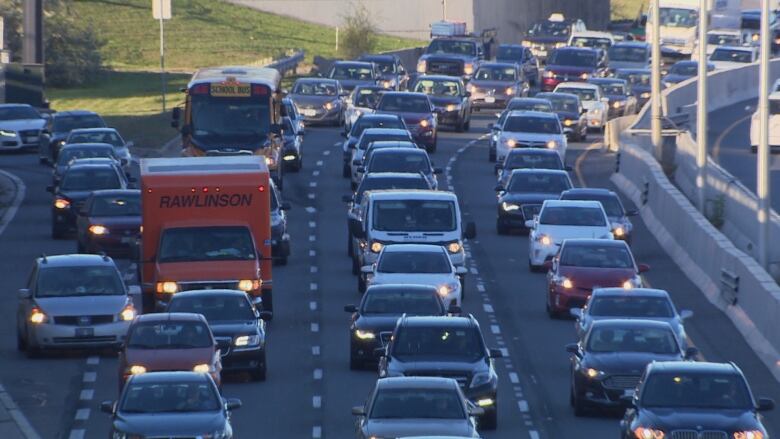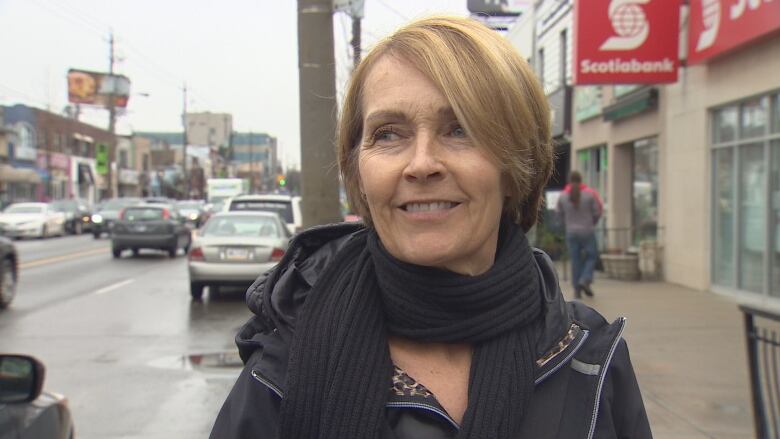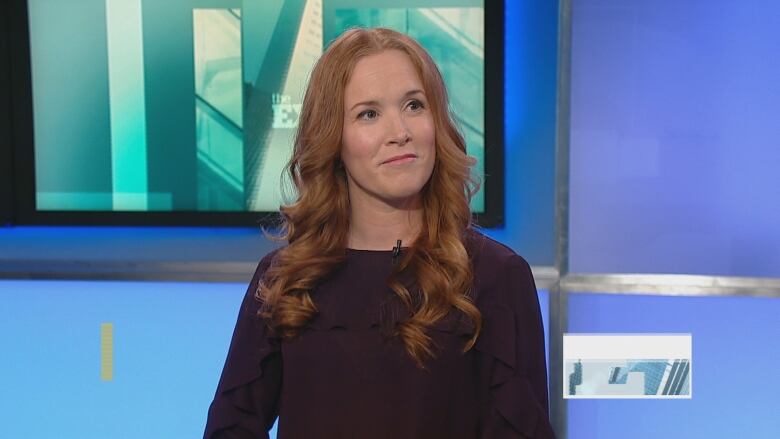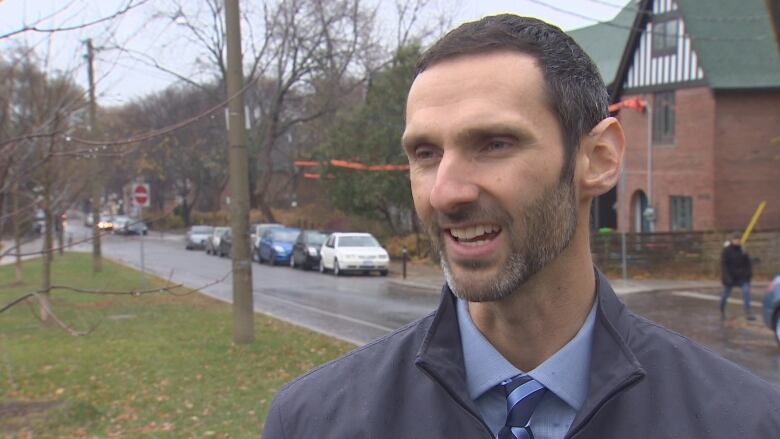Highway tolls could turn neighbourhoods into cheap shortcuts, residents warn
'Cordon tax' could prevent drivers from evading tolls, report says

The prospect of tolls on the major routes to and from downtown have some worried that their neighbourhoods will become clogged with feeevaders.
"Avenue (Road) will be crazy, it already is. Bathurst is crazy," said north Toronto resident Karen Janes. "It's already crazy around our house now. Who knows what it will be like if they put tolls in?"

Elaine Taylor looks at the long line of cars onBayviewAvenue and can't imagine it handling any more traffic.
"I rarely use the DVP, but even if I don't personally have to pay the tolls it will affect me," she said. "It's going to affect everyone."
Kristine Hubbard, the operations manager for Beck Taxi, said these concern were voiced during astakeholders' meeting with city staff in late October.
"The idea that this won't impact every road user is simply not true. If cars are diverted off these major highways, they're going to be on our arterial roads," Hubbard said.
"And to suggest that pedestrians and cyclists won't be impacted is wrong," she said, adding that the taxi industry, Business Improvement Associationsand the trucking industry all haveconcerns about the impact of tolls.

A report commissioned by the city cited traffic diversionas one of the drawbacks to theproposal, but traffic on the tolled expressways would be lighter as some drivers mightopt for public transit orfind another route on the surrounding road network.
Matti Siemiatycki, an associate professor with the Department of Geography and Planning at the University of Toronto, saysthe city would have options to limit the impact of toll avoidance.
"They will then have to review how this doesn't displace traffic off of those major highways and on to other arterial roads and side streets where that would be a significant issue," he said.
"There are different approaches, [other cities]tend to have used a cordon-based approach, where you pay when you cross into a region."

A June report by consulting firm KPMGlooked at how Toronto could employa cordon-style tolling system, similar to the "congestion tax" drivers pay in London, England.
In thescenario laidout in the report, a "cordon charge" or toll was applied vehicles entering the Toronto Central Area, defined as Bathurst Street to the west, CP Rail North Toronto Subdivision to the north, Bayview Avenue/Don River to the east and Lake Ontario to the south.
In that model, theonly way drivers could avoid or reduce the charge was by taking public transit, carpooling, or drivingattimes when the cordon charge islower.
While there are no details on what kind of toll will be proposed, Mayor John Tory used the example of a $2=per-vehicle toll to use the expressways, which could raise $200 million a year.
But some experts say such a flat toll could penalize drivers who only use the highway for one or two exits, motivating themto use neighbourhood roads as a cheaper alternative.

"People have other routes they can take," said Jonathan Hall, an assistant professor with U of T's Department of Economics and School of Public Policy and Governance. "Who this policy could really hurt are those who need to get to work right on time ... who have low income."
Those who can afford the toll will have their travel time reduced by as much as eight minutes during morning rush hour, according to the city's report.
Hall suggested one option is that some lanes of the DVP and Gardiner could remain free.
"If by someway only pricing some of the lanes like a HOT (high-occupancy toll) lane then the people who need to get to work on time can still use the DVP, they just stay in the free lanes," he said.
Ontario's Ministry of Transportation opened existing High-Occupancy Vehicle (HOV) on a section of the QEW to those who purchased High-Occupancy Toll (HOT) lane permits for $60 per month.
Hall suggested that the toll also be time-basedwith a lower charge for off hoursand distance-based, so drivers are charged by how far they go on the expressway, much like on Highway 407.












_(720p).jpg)


 OFFICIAL HD MUSIC VIDEO.jpg)
.jpg)



























































































